main: April 2009 Archives
The vacation trip is over. I'm easing out of the driver's seat and back into the saddle. Blogging will resume at a leisurely pace necessitated by rescuing the lawn and garden from two weeks of neglect, paying overdue bills, dealing with an accumulation of telephone messages, and facing the intimidating pile of mail that I hauled out of the post office in a plastic tub the size of the freight containers we saw on trucks on Interstate 5. Well, enough of that; you know what it's like to return from a vacation.
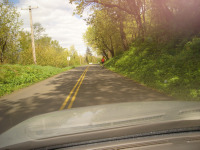 One of the pleasures of the 3000-mile motor excursion down and up the west coast of the US was silence. Except for conversation between two people who don't seem to get enough of it at home, and a modicum of music, we cruised along luxuriating in the glorious spring scenery. We saw shades of green I'd forgotten existed. This was along the old Columbia Gorge highway in Oregon.
One of the pleasures of the 3000-mile motor excursion down and up the west coast of the US was silence. Except for conversation between two people who don't seem to get enough of it at home, and a modicum of music, we cruised along luxuriating in the glorious spring scenery. We saw shades of green I'd forgotten existed. This was along the old Columbia Gorge highway in Oregon.
For purposes of relief and recharging, we limited listening to a couple of CDs. One of them came as a surprise and a pleasure. It was by a trio that included only one musician whose name is likely to be familiar to many listeners outside the San Francisco Bay area.
That name is Ron Crotty. He was the bassist in the Dave Brubeck Trio of the late 1940s and early '50s and the quartet that Brubeck and Paul Desmond formed in 195l. On the cover of Brubeck's celebrated Jazz at Oberlin from 1953, he is lounging in the lower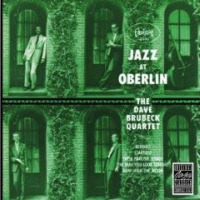 right of the photograph. Crotty's influences were Jimmy Blanton and Ray Brown. At the age of 80, that's how he plays today, with solid time, a big tone, the best notes in any given chord, no acrobatics high on the finger board, no triple stops and no blinding double-time passages. With Crotty on the new CD are men he plays with in his gigs in the café of the Oakland Museum, the clubs called Anna's and Sadie's and other spots around the Bay Area. They are bass trumpeter Frank Phipps and guitarist Tony Corman. How many important bass trumpeters can you name? I can think of two in addition to Dizzy Gillespie, who dallied briefly with the instrument. They are Cy Touff and Johnny Mandel. Mandel played bass trumpet briefly with Count Basie, then went on to other work. Add Phipps to the list. Cat can play. So can Corman. Phipps has a lovely way of alluding to extracurricular tunes without quoting them outright. Why is he shown on the cover playing a trombone? I don't know.
right of the photograph. Crotty's influences were Jimmy Blanton and Ray Brown. At the age of 80, that's how he plays today, with solid time, a big tone, the best notes in any given chord, no acrobatics high on the finger board, no triple stops and no blinding double-time passages. With Crotty on the new CD are men he plays with in his gigs in the café of the Oakland Museum, the clubs called Anna's and Sadie's and other spots around the Bay Area. They are bass trumpeter Frank Phipps and guitarist Tony Corman. How many important bass trumpeters can you name? I can think of two in addition to Dizzy Gillespie, who dallied briefly with the instrument. They are Cy Touff and Johnny Mandel. Mandel played bass trumpet briefly with Count Basie, then went on to other work. Add Phipps to the list. Cat can play. So can Corman. Phipps has a lovely way of alluding to extracurricular tunes without quoting them outright. Why is he shown on the cover playing a trombone? I don't know.
The CD, cleverly titled Crotty Corman And Phipps, is on the Auraline label, as new to me as are Phipps and
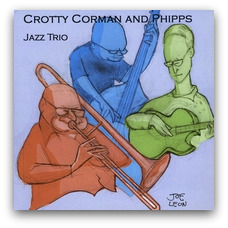 Corman. All of the tunes are standards, except Corman's samba "Rosa Rugosa" and Phipps's "Ron's Muse." I was absorbed by Crotty's straightforward bass line on "I Got Rhythm" changes in "Ron's Muse." "Rhythm" changes can be abused and they can be boring, but in the right hands they are never outdated. Other highlights: the languor of Corman's out-of-tempo introduction to "Rosa Rugosa;" Phipps's muted sound of a friendly walrus on "How Deep is the Ocean;" the way the three use the changes to create a new melody from the beginning of "Ghost of a Chance," never disclosing the tune until the bridge of the final chorus; the unperturbed spunk of "My Little Suede Shoes;" the rolling swing of "Tangerine."
Corman. All of the tunes are standards, except Corman's samba "Rosa Rugosa" and Phipps's "Ron's Muse." I was absorbed by Crotty's straightforward bass line on "I Got Rhythm" changes in "Ron's Muse." "Rhythm" changes can be abused and they can be boring, but in the right hands they are never outdated. Other highlights: the languor of Corman's out-of-tempo introduction to "Rosa Rugosa;" Phipps's muted sound of a friendly walrus on "How Deep is the Ocean;" the way the three use the changes to create a new melody from the beginning of "Ghost of a Chance," never disclosing the tune until the bridge of the final chorus; the unperturbed spunk of "My Little Suede Shoes;" the rolling swing of "Tangerine."
In this clip from YouTube, they play "Witchcraft." The sound is on the verge of distortion, but the video gives you a look at the group. Corman goes beyond allusion in his quote from John Lewis's "The Golden Striker," but he makes it fit so nicely that he can be forgiven.
The question comes up every now and then. Here's the answer from a posting in the early days of Rifftides, July 12, 2005.
Name That Blog
Now that you ask, the name Rifftides was inspired by a 1945 Coleman Hawkins piece, "Rifftide." The tune was part of the celebrated 1945 Hollywood Stampede session that included trumpeter Howard McGhee, one of the bebop kiddies Hawk nurtured. Thelonious Monk had played with Hawkins the year before. Monk later recorded the tune and called it "Hackensack" Either way, it's based on the harmonic structure of "Oh, Lady Be Good," but copyright law doesn't cover chord changes, and George Gershwin's estate earned no royalties. Nor can titles be copyrighted, so I stole Hawkins's and pluralized it.
The Rifftides staff is still on vacation but headed north and expecting to reach Rifftides World Headquarters sometime early next week. Today's drive was up the California coast on the chain of hairpin curves known as US 1, mere inches from sheer drops into the ocean on one side and the possibility of crushing avalanches on the other. It was beautiful.
When Concord Music acquired the Fantasy, Inc. complex of labels a few years ago, the deal stirred apprehension that records preserving a wide swath of jazz history would disappear into the recording industry black hole known as Out Of Print. Concord took over the Fantasy, Prestige, Riverside, Contemporary and Pablo catalogues. More than three years later, as record companies struggle against the tide of the digital revolution or try to learn to navigate in it, listeners are still concerned that classic albums will sink out of sight. One of those listeners is Rifftides reader Andrew Dowd, who wrote:
Do you know why the owners of Fantasy Records (Ralph Kaffel??) sold out to Concord a few years back? As a lifelong jazz CD and LP collector, I was saddened to see that Fantasy sold.. Fantasy was one of the last jazz labels to keep a large and full catalog; they never discontinued anything. However, over the past couple years Concord has decimated the Fantasy catalog. The Riverside catalog has been almost completely wiped out - save for the classic releases by the major legends (Sonny Rollins, Monk, Wes Montgomery, etc). I think it's a crying shame that Concord has discontinued most of the CDs by the lesser-known artists who recorded for Riverside. The Contemporary catalog was also greatly reduced in size. The Prestige catalog has fared much better, happily. I realize that opinions like mine are nothing new in the jazz world, but perhaps you might have the time and inclination to comment.
I asked Nick Phillips, the Concord vice president for jazz and catalog A&R (artists and repertoire) to respond to Mr. Dowd. His answer addresses not just the Concord-Fantasy question, but also the practicalities raising challenges to the entire recorded music business as it has been practiced for a century.
I can't speak for Ralph Kaffel and Saul Zaentz as to why they sold Fantasy. But, I can hazard a guess that Ralph--who was running the Fantasy operation and was of "retirement age"--simply decided to retire and enjoy life free from the day-to-day stresses of running a record company.
Regarding certain releases in the catalog no longer being available in physical CD form, I have a couple of comments:The record business in general has changed drastically since the time that Fantasy was acquired by Concord. Remember Tower Records? Gone. The retail stores that remain continue to reduce the number of CD titles that they carry. So, out of necessity not choice, the distribution and delivery method continues to lean more and more toward the digital arena (and not physical CD) these days, as there are fewer and fewer retail stores stocking CDs, especially the deep jazz catalog titles. And there are additional costs to continuing to keep an album available in the physical CD format (manufacturing minimum reorder quantity and cost, warehousing costs, shipping costs, returns from retailers, etc.)
Most titles in our catalog that were/are available on CD are available for digital download (via emusic.com, for example). So, we don't consider titles that are at least available for digital download--and available for any and all that care to hear them--to be "out of print."
For a related story from the Rifftides archive, click here
The current subject in Steve Cerra's Jazz Profiles blog is Jack Tracy, a former editor of Down Beat magazine and producer of important records during a yeasty period of Chicago's jazz history. His anecdotes about encounters with musicians include disclosure of an aspect of Dizzy Gillespie's personality that is rarely emphasized. To read it, go here and scroll down to "Jimmy Yancey Memorial." The piece includes a rare photograph reinforcing an essential point in Tracy's story -- that before he helped evolve bebop, Gillespie developed in an older tradition and never lost his respect for it.
To read a Rifftides post with other remembrance of Dizzy, click here.
Being on holiday, as our British friends say, does not preclude a minor post from the road. The first leg of our trip south ended with a drive through the mountains of southern Oregon between Klamath Falls and Ashland. As we negotiated the hills and curves of  Oregon Route 66 up and down Mount Parker, we had sunshine, hail, snow and wind, separately and all at once. The accompanying picture was made in less interesting weather. Around every bend was a spectacle, cliffs hanging over us, deep valleys in cloud and sunshine below us.
Oregon Route 66 up and down Mount Parker, we had sunshine, hail, snow and wind, separately and all at once. The accompanying picture was made in less interesting weather. Around every bend was a spectacle, cliffs hanging over us, deep valleys in cloud and sunshine below us.
Ashland is famous for its Shakespeare Festival. In our family, it is equally famous for Chateaulin, one of the best French restaurants outside of France. As our dinner was winding down, we heard wafting in from an adjacent dining room a tenor saxophone accompanied by bass and piano. The tune was "Sweet Lorraine." Inquiry disclosed that the players, all Ashlanders, play at Chateaulin every Tuesday evening. The tenor player is Fritz Hunnicutt, the pianist Ben Gault, the bassist Michael Barth - no relation to Benny of The Mastersounds. They played standards, with no one overreaching or underachieving. Simple, as Red Mitchell reminded us, isn't easy. Before we had to move on, a 17-year-old singer named Calysta Rupert-Anderson did a couple of songs. She was fine, too. Jazz is where you find it, even in a small town (albeit a very hip small town) in the Siskiyou Mountains.
The Rifftides staff is on vacation through the end of April. Blogging will be sporadic, if at all, inspired by the immediacy and spontaneity of events, if any.
We do not rule out the possibility of reports from the road.
Mike Harris is the Bill Evans devotee who surreptitiously recorded the Evans trio performances that comprise the music in the eight-disc boxed set Bill Evans: The Secret Sessions. Mr. Harris is a classically trained pianist who, long before he became addicted to Evans, learned to play the works of Sergei Rachmaninoff. In this article for Rifftides, he discloses that Evans, too, was a Rachmaninoff fan.
.VAN CLIBURN IN MOSCOWBy Mike Harris
By his own account, the piano music of Sergei Rachmaninoff was long a favorite of jazz pianist Bill Evans; on his final European tours he carried with him a cassette of the composer's Fourth Concerto, and Rhapsody on a Theme of Paganini, which he and the trio would study and enjoy. Fellow pianist Warren Bernhardt has related how he and Bill would spend hours playing through the two-piano reduction of the composer's Third Concerto, fascinated by the rich harmonic textures of the work's slow movement in particular.
Now, some fifty years after the fact, Video Artists International has resurrected and released an amazing series of DVD's of pianist Van Cliburn's triumphal tours of the Soviet Union, taken from old Soviet TV archives, commencing with a tape of the actual 1958 performance of the Rachmaninoff Third Concerto, an interpretation which won him First Prize in the First International Tchaikovsky Competition. This performance
(coupled on the DVD with Rachmaninoff's Second Concerto, recorded some years later) together with superb recordings of the Tchaikovsky and Grieg concertos in particular (which are available, along with the Beethoven Emperor and Brahms Second, on separate discs in this series), reveal the young pianist at the very peak of his powers. His use of rhythmic and dynamic accents, along with his rather remarkable hand-mechanics, are but two of the treats awaiting pianists and others who avail themselves of the opportunity to view these live concerts. God bless whoever was behind the retrieval and release of these important historical and musical documents.
The pianist is accompanied on all these discs (other than the solo ones, one of which includes an unforgettable rendition of the original version of the Second Piano Sonata of Rachmaninoff) by the great Russian conductor Kirill Kondrashin, whose orchestral support is perfectly attuned and balanced to the pianists's conception.
One of the interesting stories surrounding this performance of the Third Concerto has it that Sviatoslav Richter (who along with Emil Gilels was serving as a judge for this competition) became so irate at the low scores that he observed his fellow judges awarding Cliburn's efforts in the early competition (after all, this First International show was intended to display to the world the Soviet Union's cultural superiority), that he began awarding all Mr. Cliburn's performances a 10, while awarding all the Soviet pianists scores of zero.The story goes on to relate how two of the greatest pianists in history, Gilels and Richter, had to go to Premier Khruschev (who by the way is shown, along with Mikoyan, applauding at the end of the video) for permission to give the first-place award to the young American, to which Mr. Khruschev is said to have replied, "If he is the best, then give it to him." You can buy that version or not, but the end result was certainly as it should have been.
At any rate, political shenanigans aside, the execution of this enormous work (to which I confess a certain affinity, having wrestled with it's humongous difficulties and sublime beauties for several of the best years of my life) is utterly remarkable. While the 50-year old video-quality could be better, the audio is quite good and neither detracts one whit from the experience.
I am reminded of a statement by the Polish pianist Krystian Zimerman to the effect that: "One doesn't LEARN a Rachmaninoff concerto, one LIVES it!" And amen to that.
All DVD's in the VAI series are available on Amazon; the Rachmaninoff Concerto DVD, in particular, can be found here
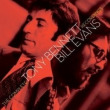 The Complete Tony Bennett/Bill Evans Recordings (Fantasy). The first CD of the set reissues Fantasy's The Tony Bennett/Bill Evans Album from 1975 and Improv's Together Again from 1976. It also has two previously unissued songs from the Together Again sessions, "Who Can I Turn To" and a rollicking run through Cole Porter's "Dream Dancing" In which Bennett blends into the end of Evans' solo as if the singer were an extension of the piano. Bennett's delighted laughter at the end of the take symbolizes the rapport between the two. Oddly, in his excellent booklet notes Will Friedwald barely mentions the track.
The Complete Tony Bennett/Bill Evans Recordings (Fantasy). The first CD of the set reissues Fantasy's The Tony Bennett/Bill Evans Album from 1975 and Improv's Together Again from 1976. It also has two previously unissued songs from the Together Again sessions, "Who Can I Turn To" and a rollicking run through Cole Porter's "Dream Dancing" In which Bennett blends into the end of Evans' solo as if the singer were an extension of the piano. Bennett's delighted laughter at the end of the take symbolizes the rapport between the two. Oddly, in his excellent booklet notes Will Friedwald barely mentions the track.
The second disc contains 20 alternate takes from Together Again and five from The Tony Bennett/Bill Evans Album. There is nothing in these alternates to suggest that the wrong takes were selected for the original releases, but they are by no means failed attempts. In the case of "You Don't Know What Love Is," the two alternates give dramatic evidence of Billie Holiday's influence on Bennett. Throughout, the alternates provide insights into the variety of Evans's inexhaustible melodic creativity. Bennett and Evans together are an art song equivalent of Dieter Fischer-Dieskau's and Gerald Moore's artistry with German lieder, but we have the added element of Evans' genius at improvisation.
Daryl Sherman, New O'leans (Audiophile). Hurricane Katrina's assault on the Crescent City inspired Sherman to record this collection of songs, but it goes beyond the post-disaster blues to touch on many of the aspects that endear New Orleans to the world. Harold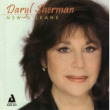 Arlen's "Ill Wind" was an obvious choice. Louis Armstrong's "Red Cap," Irving Berlin's "Shaking the Blues Away," Henry Mancini's "Moon River" and Dave Frishberg's "Eloise" may seem unexpected companions in a New Orleans tribute until you hear how Sherman and her colleagues use them to evoke the city. Rhodes Spedale's "S'Mardi Gras" needs no enhancement in that regard; it is a tour of Fat Tuesday locations and emotions. Guitarist James Chirillo and trumpeter Connie Jones are Sherman's best-known sidemen. Reed man Tom Fischer and bassist Al Bernard, misidentified as "Menard," are in the same league. Sherman plays piano on this drummerless date. The infectious good cheer in her voice will make you grin, except when she makes your eyes moist with "Mr Bojangles" and "Wendell's Cat."
Arlen's "Ill Wind" was an obvious choice. Louis Armstrong's "Red Cap," Irving Berlin's "Shaking the Blues Away," Henry Mancini's "Moon River" and Dave Frishberg's "Eloise" may seem unexpected companions in a New Orleans tribute until you hear how Sherman and her colleagues use them to evoke the city. Rhodes Spedale's "S'Mardi Gras" needs no enhancement in that regard; it is a tour of Fat Tuesday locations and emotions. Guitarist James Chirillo and trumpeter Connie Jones are Sherman's best-known sidemen. Reed man Tom Fischer and bassist Al Bernard, misidentified as "Menard," are in the same league. Sherman plays piano on this drummerless date. The infectious good cheer in her voice will make you grin, except when she makes your eyes moist with "Mr Bojangles" and "Wendell's Cat."
Joe Sardaro, Protégé (Catch My Drift). The current short supply of effective male singers with jazz leanings makes 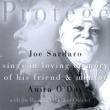 the release of a new recording by Sardaro a welcome event. The market is not saturated with his albums. His last one, Lost in the Stars, was a 1986 LP with a combo headed by Shelly Manne. It has never been reissued on CD. The Boston-area Winiker Brothers Quintet accompanying him on the new CD is less widely known but excellent. Sardaro employs his light baritone to pleasant effect in a set of 16 well-chosen songs, some of them rarely performed. I haven't heard anyone do Charles La Vere's "Mis'ry and the Blues" since Jack Teagarden's 1961 recording. It's interesting to hear it in the company of songs by, among others, Jobim, Kern, Ellington and McCartney. Sardaro is touching in his revival of the Arthur Schwartz-Dorothy Fields rarity "Alone Too Long." As I wrote in a review of his 1986 album, in the absence of a spectacular vocal instrument, Sardaro uses taste, swing, diction and lyric interpretation. The CD's title recognizes Sardaro's debt to Anita O'Day, who encouraged him when he was young and with whom he kept a close relationship for the rest of her life.
the release of a new recording by Sardaro a welcome event. The market is not saturated with his albums. His last one, Lost in the Stars, was a 1986 LP with a combo headed by Shelly Manne. It has never been reissued on CD. The Boston-area Winiker Brothers Quintet accompanying him on the new CD is less widely known but excellent. Sardaro employs his light baritone to pleasant effect in a set of 16 well-chosen songs, some of them rarely performed. I haven't heard anyone do Charles La Vere's "Mis'ry and the Blues" since Jack Teagarden's 1961 recording. It's interesting to hear it in the company of songs by, among others, Jobim, Kern, Ellington and McCartney. Sardaro is touching in his revival of the Arthur Schwartz-Dorothy Fields rarity "Alone Too Long." As I wrote in a review of his 1986 album, in the absence of a spectacular vocal instrument, Sardaro uses taste, swing, diction and lyric interpretation. The CD's title recognizes Sardaro's debt to Anita O'Day, who encouraged him when he was young and with whom he kept a close relationship for the rest of her life.
Mel Tormé, California Suite (Fresh Sound). This reissue has both versions of Torme's suite honoring his adopted state, the 1949 recording for Capitol and the 1957 remake on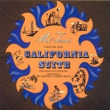 Bethlehem. Tormé fashioned his words and music into a cantata for orchestra, his voice and his backing vocal quartet The Melltones. The 1949 recording with Hal Mooney's orchestra was well received, but Tormé was never completely satisfied with it. He recruited arranger Marty Paich, with whose dek-tette he had recorded LPs now recognized as minor masterpieces. They revised the work, adding interest to the harmonic structures and investing it with jazz vitality that was underemphasized in the earlier version. As splendid a singer as Tormé was the first time around, by '57 his voice had taken on added burnish, depth and intensity. Both versions are impressive, but the later one has improvements to the lyrics and an increased rhythmic sensibility. As the first one ends, the listener may wonder why Tormé wanted to take another run at it. When the second version ends, you'll know.
Bethlehem. Tormé fashioned his words and music into a cantata for orchestra, his voice and his backing vocal quartet The Melltones. The 1949 recording with Hal Mooney's orchestra was well received, but Tormé was never completely satisfied with it. He recruited arranger Marty Paich, with whose dek-tette he had recorded LPs now recognized as minor masterpieces. They revised the work, adding interest to the harmonic structures and investing it with jazz vitality that was underemphasized in the earlier version. As splendid a singer as Tormé was the first time around, by '57 his voice had taken on added burnish, depth and intensity. Both versions are impressive, but the later one has improvements to the lyrics and an increased rhythmic sensibility. As the first one ends, the listener may wonder why Tormé wanted to take another run at it. When the second version ends, you'll know.
Carol Fredette, Everything In Time (Soundbrush). This is Fredette's first CD in more than a decade, and worth waiting for. I haven't heard anyone do the Bing Crosby feature "Love Thy Neighbor" since John Coltrane in the 1950s. Fredette sings it with joy in her voice to equal the whooping exuberance of Trane's solo. Her laughing, quacking take on the bossa nova classic "O Pato" is just one more of 15 reasons to admire this classy collection.
John Sheridan, Swing Is Still The King, featuring Rebecca Kilgore (Arbors). Kilgore, one of the purest of singers, is on more than half the tracks, a fine idea. Pianist Sheridan's dandy mid-sized band includes tenor saxophonist Scott Robinson, trombonist Dan Barrett and drummer Jake Hanna.
Ann Hampton Calloway, At Last (Telarc). The customary question raised in most reviews of Calloway is whether she is a jazz singer or a cabaret performer. That's a waste of space. She has a big, rich voice and sings beautifully. What else matters? Pianist Ted Rosenthal, bassist Jay Leonhart and drummer Victor Lewis are her rhythm section. Marvin Stamm, Rodney Jones and Wycliffe Gordon are among the guest soloists.
Diana Krall, Quiet Nights (Verve). It's a familiar phenomenon, the assumption by elements of the jazz cognoscenti that if a jazz artist achieves wide success, she must have watered down the product. Krall is their current favorite target, a position formerly filled by Dave Brubeck, Cannonball Adderley, Miles Davis and Chick Corea, among others. She has never been a great singer or a great jazz pianist, merely very good, and appealing in both categories. Claus Ogerman's arrangements suit her nicely in this bewitchingly low-key recital. Slipping in a "bonus" cover of the Bee Gee's 1971 tearjerker hit "How Can You Mend a Broken Heart" wasn't the best idea Krall--or her producer--might have come up with. The rest of the CD is fine, with a touching treatment of Jobim's "Quiet Nights" ("Corcovado").
Kelley Johnson, Home (Sapphire). Johnson shines in her singing, composing and arranging on this fully realized recording, a balanced blend of the familiar and the daring. She has prime assistance from her pianist husband John Hansen on some tracks and Geoffrey Keezer on others. Johnson's and Hansen's duet on "Where Do You Start" is a highlight. Ingrid Jensen and John Wikan contribute an arrangement that teams Johnson's voice with Jay Thomas's trumpet and Keezer's piano to channel "Moon River" through new harmonic territory. This collection deserves and rewards repeated listening.
To see Singers, Part 1, go here.
Tony Bill writes from Venice, California:
CINCO DE MAYO
When Bud Shank died on April 2 at 82, there were hundreds of
thousands, probably millions, who were reminded of his recordings,
concerts and performances. But there were also about a dozen guys who
remembered a single, private and magical half-hour of his life...and
their own.I met Bud on a boat. He was a sailing pal of my brother, John - a
professional skipper who had raced on Bud's boat, Xanalyn. I owned a
sailboat, too: Olinka. And in May of 1977, I decided to enter the
famous Newport to Ensenada race. My brother suggested Bud as one of the
crew. I wasn't a big jazz fan, so Bud Shank's name meant nothing
musical to me. I didn't realize he was one of the world's great
flautists, who would, only a few years later, give it up for other
instruments. But I knew he was a sailing man; one of the best.There were 12 of us on the boat. Most of us already knew each other;
hard-core ocean racers, signed up for a good time on a beautiful, but
dated, wooden yawl. Built in Sweden in 1952, Olinka was also a handful
when racing; it took a dozen or more very good sailors to wring the
best out of her. And Bud was clearly qualified. We had a great time and
a great race, crossing the finish line at sunrise, ahead of the fleet.
First in class.Bud went ashore with a few of us in Ensenada to stock up for our
celebratory breakfast: huevos; tortillas; tomates; cebollas; limones;
tequila; sangrita with a woman's picture on the bottle. It was Cinco de
Mayo: the Mexican day of Independence. And on the way back to the dock
we passed through the sleepy, hungover, once-a-year swarm; past kids
setting off fireworks. There was an old blind man selling little
handrolled clay pipes with a few random holes punched in here and
there; little flowers and donkeys painted on next to the Ensenada BC;
the kind of souvenier trinket you'd buy for your kid to prove you'd
been to Mexico...and hope they didn't try to play it.So the guy holds up a pipe, and Bud gives it a quick try, buys it for a
buck (overpriced even 32 years ago) and sticks it in the grocery bag.
And we go back to the boat, fix breakfast, and settle down to catch
some of the sleep we lost during the 20 hour race. Then, rocking in the
early morning sun, watching the scores of boats still trailing across
the finish line, we start to hear Bud Shank, alone on the foredeck,
playing Antonio Carlos Jobim - purely and flawlessly - on what only moments
before was a crude, cheap toy; a piece of clay before that; and dust
before that. It was the most memorable outdoor concert of my life.First in class.
(Mr. Bill produced The Sting, among other motion pictures. Films he has directed include Crazy People and Flyboys -- DR)
Jim Wilke, the proprietor of Jazz After Hours, writes:
I thought you'd like to know I'm featuring several selections by Bud Shank in each hour of tonight's program. Music ranges from his earliest World Pacific and Pacific Jazz records in the '50s through his latest issued recordings. Please pass the word to others you think would be interested.
For a list of the 79 stations that carry Wilke''s syndicated program, go here. If you are in none of their listening areas, you can hear him on KPLU-FM's streaming internet feed. Follow this link and click on "Listen Live." The broadcast is from midnight to 4:30 a.m. PDT, 3:00 a.m. to 7:30 a.m EDT, Saturday, April 11.
Shank, a major alto saxophonist, flutist, band leader and educator, died a week ago. To see the Rifftides item about his passing and his importance, go here
Kim Matas has a fine profile of Shank in her "Life Stories" column in today's Arizona Star, his hometown paper.
I've been sampling CDs by singers. For the most part, the CDs are new, but not all of the singers are. As an example, take Jimmy Rushing...please.
Jimmy Rushing, The Scene: Live In New York (High Note). Rushing became famous with the Count Basie band of the late 1930s and was with Basie until 1950. The cliché most often applied to him is "blues shouter," and he was a magnificent one. The designation sells him short, though. Rushing was also a superlative singer of standard songs, particularly of what used to be called rhythm ballads. In the 1960s and nearly to the time 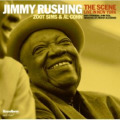 of his death in 1972, He sang frequently with tenor saxophonists Al Cohn and Zoot Sims. They appeared in other places, but most often at the Half Note in lower Manhattan. One of my imperishable memories is of Rushing, Sims, Cohn, pianist Dave Frishberg and a bassist and drummer jammed onto the Half Note's little bandstand having the time of their lives, spreading joy. Most often, the drummer was Mousey Alexander. Frequently, the bassist was Major Holley. Alexander and Holley are on this album. Frishberg is the pianist throughout, although the liner notes and the tray card indicate that there is an additional pianist.
of his death in 1972, He sang frequently with tenor saxophonists Al Cohn and Zoot Sims. They appeared in other places, but most often at the Half Note in lower Manhattan. One of my imperishable memories is of Rushing, Sims, Cohn, pianist Dave Frishberg and a bassist and drummer jammed onto the Half Note's little bandstand having the time of their lives, spreading joy. Most often, the drummer was Mousey Alexander. Frequently, the bassist was Major Holley. Alexander and Holley are on this album. Frishberg is the pianist throughout, although the liner notes and the tray card indicate that there is an additional pianist.
Alan Grant of New York's WABC Radio regularly broadcast from the Half Note in the mid-sixties. His shows often featured Rushing and company. There is little question that these tracks come from those remote broadcasts, but the record company avoids identifying the club or the source of the tapes. That is of small moment, perhaps, except that this album is not only entertaining, it also documents a time and place in jazz history and should provide the facts. The CD includes two instrumentals by the Sims-Cohn group, Zoot's "Red Door" and Al's "The Note," the latter misidentified as "It's Noteworthy."
Discographical inaccuracies aside, music is the name of the game, and the game is played no better than Rushing and his companions play it here. Rushing is in great voice and high spirits. Cohn, Sims and the rhythm section reciprocate. The rescue and release of these performances is good news.
The Scene is a fitting companion to Rushing's last recording, The You And Me That Used To Be, an 1972 RCA Bluebird album with Sims, Cohn, Frishberg, Budd Johnson, Ray Nance, Milt Hinton and Mel Lewis playing Frishberg's perfectly tailored arrangements. The bad news about The You And Me That Used To Be is that it's out of print and selling for as much as $88.45 on Amazon. The good news is that It's available for $1.65 as an MP3 download. Maybe there's something to this digital commerce stuff after all.
Here is Jimmy Rushing in the 1960s accompanying himself in one of his favorite blues. This is from Ralph J. Gleason's Jazz Casual public television series.
Briefly: Other Vocal CDs
Connie Evingson: Little Did I Dream (Minnehaha Music). The subtitle is Songs By Dave 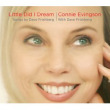 Frishberg. He traveled to his native Minnesota to record with Evingson, a fine vocalist. Their Twin Cities colleagues include his old St. Paul pal Dave Karr, an accomplished saxophonist. Evingson brings her individuality and spark to fourteen of Frishberg's songs. Among them are "Zoot Walks In," "My Attorney Bernie" and a touching treatment of "Listen Here."
Frishberg. He traveled to his native Minnesota to record with Evingson, a fine vocalist. Their Twin Cities colleagues include his old St. Paul pal Dave Karr, an accomplished saxophonist. Evingson brings her individuality and spark to fourteen of Frishberg's songs. Among them are "Zoot Walks In," "My Attorney Bernie" and a touching treatment of "Listen Here."
Retta Christie with 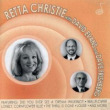 David Evans and Dave Frishberg (Retta). Christie is a country singer who leads her own band in Oregon. Here, however, she teams with Frishberg and Evans in a strange-bedfellows set of greater- and lesser-known songs that work surprisingly well together. Her voice is light, her delivery straightforward. Frishberg gets plenty of solo time, as does Evans, one of the great undercover secrets among tenor saxophonists. There's no drummer. Christie, Frishberg and Evans don't need one. If you've always wanted to hear "The Thrill is Gone" and "Ridin' Down the Canyon" under the same cover, this is the one for you.
David Evans and Dave Frishberg (Retta). Christie is a country singer who leads her own band in Oregon. Here, however, she teams with Frishberg and Evans in a strange-bedfellows set of greater- and lesser-known songs that work surprisingly well together. Her voice is light, her delivery straightforward. Frishberg gets plenty of solo time, as does Evans, one of the great undercover secrets among tenor saxophonists. There's no drummer. Christie, Frishberg and Evans don't need one. If you've always wanted to hear "The Thrill is Gone" and "Ridin' Down the Canyon" under the same cover, this is the one for you.
John Pizzarelli with The Clayton-Hamilton Orchestra, Dear Mr. Sinatra (Telarc). What, another Sinatra tribute? Yes, and beautifully executed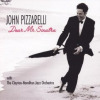 by the Clayton-Hamiltons and Pizzarelli being his musical self singing songs associated with Sinatra. He also plays satisfying guitar solos, incorporating that voice-single string unison voodoo that he does so well. The arrangements, mostly by John Clatyton, are subtle, only now and then hinting at Nelson Riddle. This has been sitting in my CD stacks unheard for a couple of years. I wish that I had put it on sooner.
by the Clayton-Hamiltons and Pizzarelli being his musical self singing songs associated with Sinatra. He also plays satisfying guitar solos, incorporating that voice-single string unison voodoo that he does so well. The arrangements, mostly by John Clatyton, are subtle, only now and then hinting at Nelson Riddle. This has been sitting in my CD stacks unheard for a couple of years. I wish that I had put it on sooner.
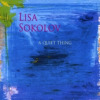 Lisa Sokolov, A Quiet Thing (Laughing Horse). Intriguing in her eccentricity, Sokolov takes flying leaps at time, diction, intonation and interpretation. She usually lands right side up. She's a vocal actress and a chance-taker well matched with adventurous musicians including bassist Cameron Brown, pianist John DiMartino and drummer Gerry Hemingway.
Lisa Sokolov, A Quiet Thing (Laughing Horse). Intriguing in her eccentricity, Sokolov takes flying leaps at time, diction, intonation and interpretation. She usually lands right side up. She's a vocal actress and a chance-taker well matched with adventurous musicians including bassist Cameron Brown, pianist John DiMartino and drummer Gerry Hemingway.
Ethan Iverson's recollection of that quaint piece of audio gear, the reel-to-reel tape recorder, triggered even older thoughts from the eminent bassist and anecdotist Bill Crow.
gear, the reel-to-reel tape recorder, triggered even older thoughts from the eminent bassist and anecdotist Bill Crow.
My memories of early equipment go clear back to the Edison cylinder record player. My dad bought one (used) around 1933. It came with a box of cylinders, maybe a dozen, from which I learned a couple of Harry Lauder songs, some vaudeville tunes, and a song called "The Last Long Mile," the lyrics of which I remember almost entirely. It was a slightly humorous complaint from a guy marching with the army, and I found out from Doug's book many years later, that it was written by Paul Desmond's father! I wish I had found that out while Paul was still with us... I could have cracked him up by singing it to him.
One of my mother's pupils came by the house one day with a portable disc recorder, on which I engraved a child's voice singing "On The Good Ship Lollipop." My first personal record player (1943) was a tiny plastic turntable that I could wire into my table radio, and on which I played my beginning collection of jazz 78s.When I got out of the army in 1949, I bought the first available tape recorder, a Brush Soundmirror, which had a fatal flaw: the tape went at too sharp an angle around a capstan, and that angle increased as the tape wound off the reel, causing drag that sometimes slowed the tape down. Their next model featured a straight through passage for the tape, but I waited until Wollensak came out with a small portable and I put a lot of music on that. Lost forever, since the tape that was available then was oxide on paper, which deteriorated in just a few years. My college friend went a different way, having bought a Sears wire recorder, on which he recorded my first efforts as a jazz trombonist. All gone, probably fortunately.
To visit Mr. Crow's web site, click here.
For your listening, viewing and reading delectation, the Rifftides staff presents the new selection of Doug's Picks. Please visit the center column.
The news from Connecticut is that Dave Brubeck's two-week hospitalization for a viral infection is at an end. The setback made him miss the premiere in California last week of a new orchestral work inspired by Ansel Adams. He and his son Chris had been working on it for a year. Brubeck is back home and back at work, but his doctors felt that a transcontinental trip was not a good idea for a recuperating 88-year-old. In advance of the premiere, Paul Conley spoke with the Brubecks, father and son, and did a report for National Public Radio. To hear it and see one of Adams' most famous photos, follow this link and click on "Listen."
Comments are still arriving about Bill Kirchner's list of recommended big band recordings since 1955. You will find the original item here and followups here. Not all of the comments are coming to Rifftides. As discussions will in the internet age, this one gravitated to other sites.
Here is a little of what the unfailingly provocative young composer and bandleader Darcy James Argue wrote on his Secrety Society web site.
The thing is, there's an awful lot of bigband music that is important to the history of jazz that doesn't really do a whole lot for me. I'm afraid this would include a s--- -ton of music that is beloved by true bigband connoisseurs. For instance, I know thissounds heretical, but most of Count Basie's output after Jo Jones left the group leaves me totally cold. Also, I've never really been able to develop much affection for the various Stan Kenton bands, etc, even when I respect the craftsmanship and inventiveness of some of the writing.
The stuff I like best and respond to viscerally and have invested time in studying in detail really represents only a small corner of the vast bigband universe. The center of this solar system is definitely the Thad Jones-Mel Lewis Orchestra -- especially the first edition of the group with Richard Davis on bass. This has been my favorite bigband since I was thirteen years old.
If Darcy wants to make "big band" one word, he'll just have to deal with the usage police. To read all of his entry, which includes recommendations of his own, go here. His readers chime in with provocative comments of their own.
On Do The Math, Ethan Iverson, pianist of The Bad Plus, rambles engagingly with the big band discussion as a sort of touch stone. Here's part of his rambling.
I didn't come from a family interested in music. We had a record player but hardly any records. However, my aunt and uncle had a small collection of 60's-era stuff, and when we visited them I would head straight to their living room and startspinning platters. The two discs that just astounded me were This Time By Basie: Hits of the 50s and 60s and Boogie Woogie Piano Stylings by Art Simmons. (Simmons isn't well-known; I haven't heard his record in about 25 years. In fact, I had forgotten entirely about Boogie Woogie Piano Stylings until today. Within a few minutes of reading Darcy's post, I found and purchased a copy on eBay for a slight sum. Looking at this fabulous cover art really takes me back.)
After realizing that I always played them over and over, my relatives let me borrow the Basie and Simmons records so that I could tape them on my home reel-to-reel player.Perhaps my younger readers don't know what a reel-to-reel player is. The picture at the top of this post might look like serious studio equipment - and maybe it is, high-end ones are still used - but the one in my house looked just like that and was merely the clunky predecessor to the compact cassette tape. A reel-to-reel tape deck was the only common way to tape an LP before about 1970 or so.
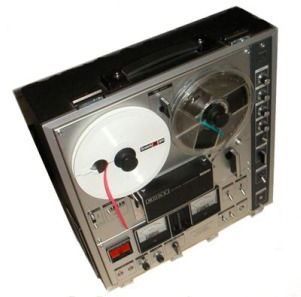
I stole Ethan's picture of the old Sony reel-to-reel machine. Iverson does get back to the matter of big bands. To read his entire entry, click here.
I still have the Revox reel-to-reel I inherited from Paul Desmond and use it frequently. I wish that some of my newer components were of Revox quality.
Bud Shank's honesty, forthrightness and cheerfulness came through in his playing. Those qualities and his transcendent musicianship were evident to all but those deafened by categorical imperatives having to do with geography, race and style. He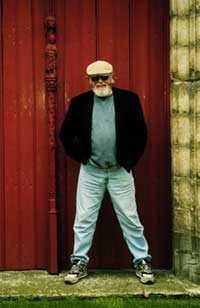 lived to be 82, and he worked to the end, one of the great alto saxophonists in jazz. Shank died Thursday night shortly after arriving home in Tucson, Arizona, from Southern California. He had been working on a recording project. Earlier this year, he recorded a CD in a club engagement with the rhythm section he spent a lot of time with over the past decade, pianist Bill Mays, bassist Bob Magnusson and drummer Joe LaBarbera. Mays sent a message this morning:
lived to be 82, and he worked to the end, one of the great alto saxophonists in jazz. Shank died Thursday night shortly after arriving home in Tucson, Arizona, from Southern California. He had been working on a recording project. Earlier this year, he recorded a CD in a club engagement with the rhythm section he spent a lot of time with over the past decade, pianist Bill Mays, bassist Bob Magnusson and drummer Joe LaBarbera. Mays sent a message this morning:
Our last work together was in January (4 nights at L.A.'s Jazz Bakery). Some very memorable tracks were recorded that week and I hope they see release some day. Bud was always willing to let the music "go where it wants" and set minimum "controls" on the players. His enthusiasm, optimism, laugh, and sense of humor, were a delight (after moving to Arizona he bought a truck and installed his no-more-used clarinet in the rifle rack!). I will miss the man very much.
Shank was inconvenienced by the pulmonary problems that restricted his mobility the 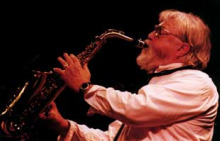 past couple of years. He spent more time in a wheel chair than suited him. Nonetheless, he traveled long distances to perform, as far as Japan, maintaining the vigor of his playing and the essential buoyancy that dominated his personality.
past couple of years. He spent more time in a wheel chair than suited him. Nonetheless, he traveled long distances to perform, as far as Japan, maintaining the vigor of his playing and the essential buoyancy that dominated his personality.
Over the years, we worked together on projects and I spent considerable time with him. When I was researching the long essay that became the booklet for the 1998 Mosaic box set The Pacific Jazz Bud Shank Studio Sessions (limited edition, long since sold out), I stayed with Bud and Linda Shank at their house in the woods near Port Townsend, Washington. Here's a passage that says something about the man and about his lack of self-deception.
If the child is father to the man, then the thin, crew-cut diffident, inward-looking Bud Shank begat his opposite number. His substantial figure comfortable on a couch in a music room above a spacious lawn surrounded by tall pines, Shank agreed to do something he detests, look backward in music. With a mane of grey hair and a beard that squares off a solid jaw he has the look of a Victorian sea captain. His appearance is appropriate to the history of the seafaring town he lives in, but one floor below is a garage containing his collection of Porsches and an Infiniti Q45. Shank's laugh comes often and usually accompanies strong opinions. It has resonance and a certain wryness. I persuaded him to listen to "Bag of Blues," Bob Cooper's unusual composition from 1956.
When it was over, he said, laughing, "I was very young at the time. Formative period. Still learning. Still searching. I could see evidence of some of those influences we talked about. Spots of Zoot Sims, spots of Lee Konitz, spots of Charlie Parker.I told him, "When you were listening to yourself play a double-time passage, you said, 'Show-off.'"
"Well, yeah, but I really wasn't showing off in those days. It came from some musical reason but it didn't fit the flow of what I was doing before or after. I guess that's why it disturbed me. Again, that's the mish-mosh of different influences that were in me in those days. I didn't have it together yet.
Later, that night, or maybe the next day, we talked about his rise to fame in the 1950s when Los Angeles, always a good jazz town, became the center of what commercial interests and some critics decided was a school or movement. Shank's quartet then had Claude Williamson on piano, Don Prell on bass and Chuck Flores on drums.
With the exception of those caught in the war between beboppers and moldy figs that was manufactured by know-nothing critics in the 1940s, no musicians have been more unfairly typecast than the young jazz players of Los Angeles in the 1950s.
"Neither Claude nor Chuck nor I was playing what was known as 'west coast jazz' music at that time," Shank said. 'That happened a few years before then and we were all breaking away from that.""Meaning what?" I asked. "What were you breaking away from?"
"The very delicate way that we all played in earlier years..." He stopped in mid-sentence. "I don't even know what the hell west coast jazz is," he said, with exasperation and no wry laugh. "It was something different from what they were doing in New York, so the critics called it west coast jazz. That Miles Davis Birth Of The Cool album, out of New York, probably started west coast jazz. It was also very organized, predetermined, written. It was a little bit more intellectual, shall I say, than had happened before. Jimmy Giuffre, Buddy Childers, Shorty Rogers, Shelly Manne, Marty Paich, Bob Cooper, almost everybody involved; we all came from somewhere else, New York, Texas, Chicago, Ohio. The fact that we were in L.A. around the orange trees had nothing to do with it. I really think that everybody played the way they would have played no matter where they were. New York writers, they're the ones who invented west coast jazz."
"Those bastards," I said.
"Those bastards," he said, laughing uproariously.
It was a source of frustration to Shank that, for many listeners who didn't keep up with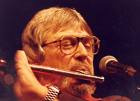 music, his flute playing defined him. During his membership in the Lighthouse All-Stars in the fifties, he became one of the best jazz flutists in the world.
music, his flute playing defined him. During his membership in the Lighthouse All-Stars in the fifties, he became one of the best jazz flutists in the world.
"I had always thought of myself as a saxophone player," he told me, "but the flute thing just appeared and all of a sudden, it was 'Oh, flute, flute, Bud Shank, flute,' which didn't sit too well, but at least people were noticing me, so, okay, let's keep on doing it. I was a saxophone player. That's all I'd ever thought of."
He did a lot of flute playing in the sixties and early seventies, when rock and roll stifled opportunities in jazz and he supplemented his income with studio work. Shank is still a model for many who play the instrument. He disposed of the flute in the mid-seventies, along with his career in the studios. "From now on," he said, "I'm a bebop alto player." As he concentrated on the saxophone, the aggressiveness, even ferocity, of his playing expanded along with the size of his sound and a magnificent feeling of liberation.
What a bebop alto player he was.
The text of a remarkable address is making its way around the internet through the part of the world in which music matters, which is everywhere. Karl Paulnack, pianist and director of the Boston Conservatory's music division, greeted the parents of incoming freshman students. He made the speech in the fall of 2004, but it has taken on new life lately, because of passages like this:
I have come to understand that music is not part of "arts and entertainment" as the newspaper section would have us believe. It's not a luxury, a lavish thing that we fund from leftovers of our budgets, not a plaything or an amusement or a pastime. Music is a basic need of human survival. Music is one of the ways we make sense of our lives, one of the ways in which we express feelings when we have no words, a way for us to understand things with our hearts when we cannot with our minds.
And this, which he told the parents he would be saying to their children:
You're not here to become an entertainer, and you don't have to sellyourself. The truth is you don't have anything to sell; being a musician isn't about dispensing a product, like selling used Chevies. I'm not an entertainer; I'm a lot closer to a paramedic, a firefighter, a rescue worker. You're here to become a sort of therapist for the human soul, a spiritual version of a chiropractor, physical therapist, someone who works with our insides to see if they get things to line up, to see if we can come into harmony with ourselves and be healthy and happy and well.
Frankly, ladies and gentlemen, I expect you not only to master music; I expect you to save the planet. If there is a future wave of wellness on this planet, of harmony, of peace, of an end to war, of mutual understanding, of equality, of fairness, I don't expect it will come from a government, a military force or a corporation. I no longer even expect it to come from the religions of the world, which together seem to have brought us as much war as they have peace. If there is a future of peace for humankind, if there is to be an understanding of how these invisible, internal things should fit together, I expect it will come from the artists, because that's what we do.
Before he reached that point in his address, Paulnack talked about the ancient Greeks' recognition of the similarity between music and astronomy, about Olivier Messiaen in a Nazi concentration camp writing and performing his Quartet For The End Time, about how the September 11 attack made Paulnack question the value of music, about how the performance of a piece by Aaron Copland affected a pilot who had seen a friend die in war half a century earlier.
Paulnack's talk is about the unifying, healing nature of music. You can read the whole thing by clicking here.
I have never heard Karl Paulnack play the piano. His speech makes me want to.
AJ Ads
AJ Blogs
AJBlogCentral | rssculture
Terry Teachout on the arts in New York City
Andrew Taylor on the business of arts & culture
rock culture approximately
Laura Collins-Hughes on arts, culture and coverage
Richard Kessler on arts education
Douglas McLennan's blog
Dalouge Smith advocates for the Arts
Art from the American Outback
Chloe Veltman on how culture will save the world
For immediate release: the arts are marketable
No genre is the new genre
David Jays on theatre and dance
Paul Levy measures the Angles
Judith H. Dobrzynski on Culture
John Rockwell on the arts
innovations and impediments in not-for-profit arts
Jan Herman - arts, media & culture with 'tude
dance
Apollinaire Scherr talks about dance
Tobi Tobias on dance et al...
jazz
Howard Mandel's freelance Urban Improvisation
Focus on New Orleans. Jazz and Other Sounds
Doug Ramsey on Jazz and other matters...
media
Jeff Weinstein's Cultural Mixology
Martha Bayles on Film...
classical music
Fresh ideas on building arts communities
Greg Sandow performs a book-in-progress
Harvey Sachs on music, and various digressions
Bruce Brubaker on all things Piano
Kyle Gann on music after the fact
Greg Sandow on the future of Classical Music
Norman Lebrecht on Shifting Sound Worlds
Joe Horowitz on music
publishing
Jerome Weeks on Books
Scott McLemee on books, ideas & trash-culture ephemera
theatre
Wendy Rosenfield: covering drama, onstage and off
visual
Public Art, Public Space
Regina Hackett takes her Art To Go
John Perreault's art diary
Lee Rosenbaum's Cultural Commentary
